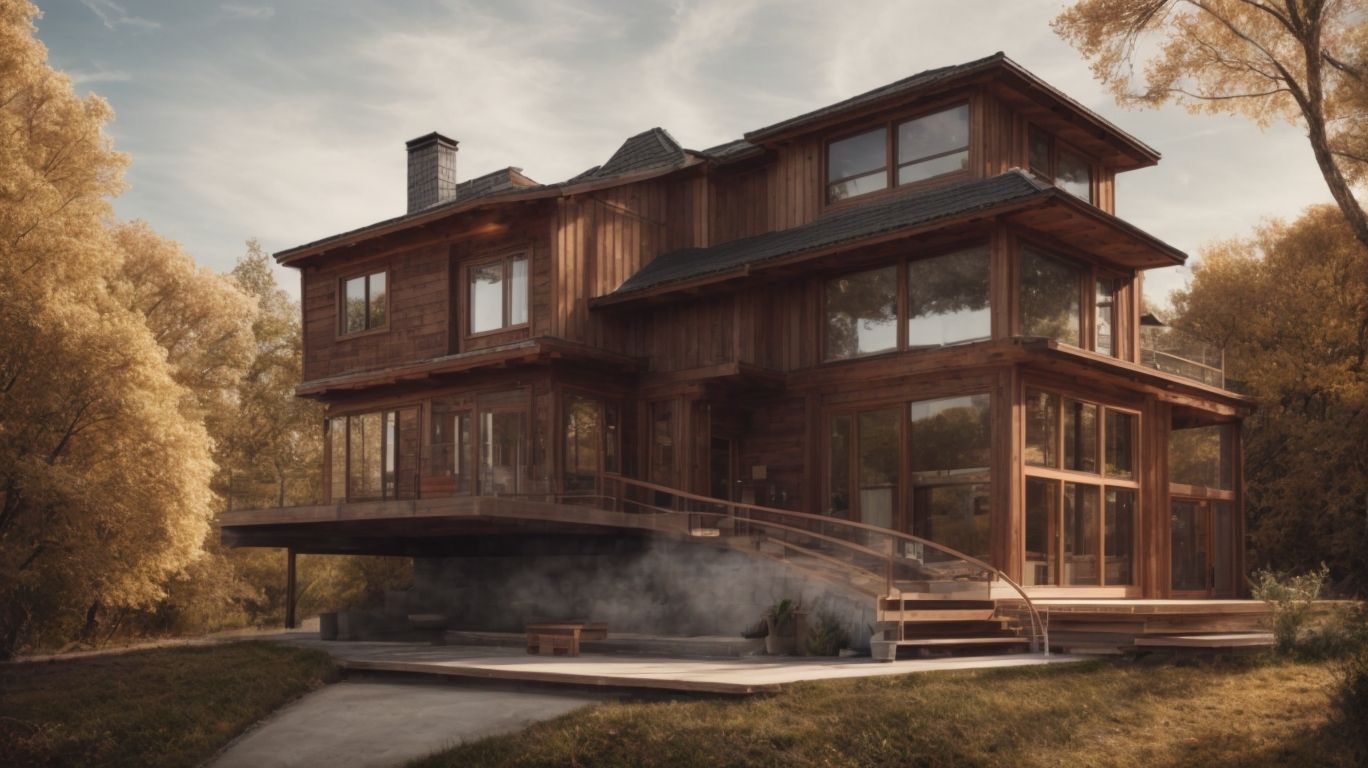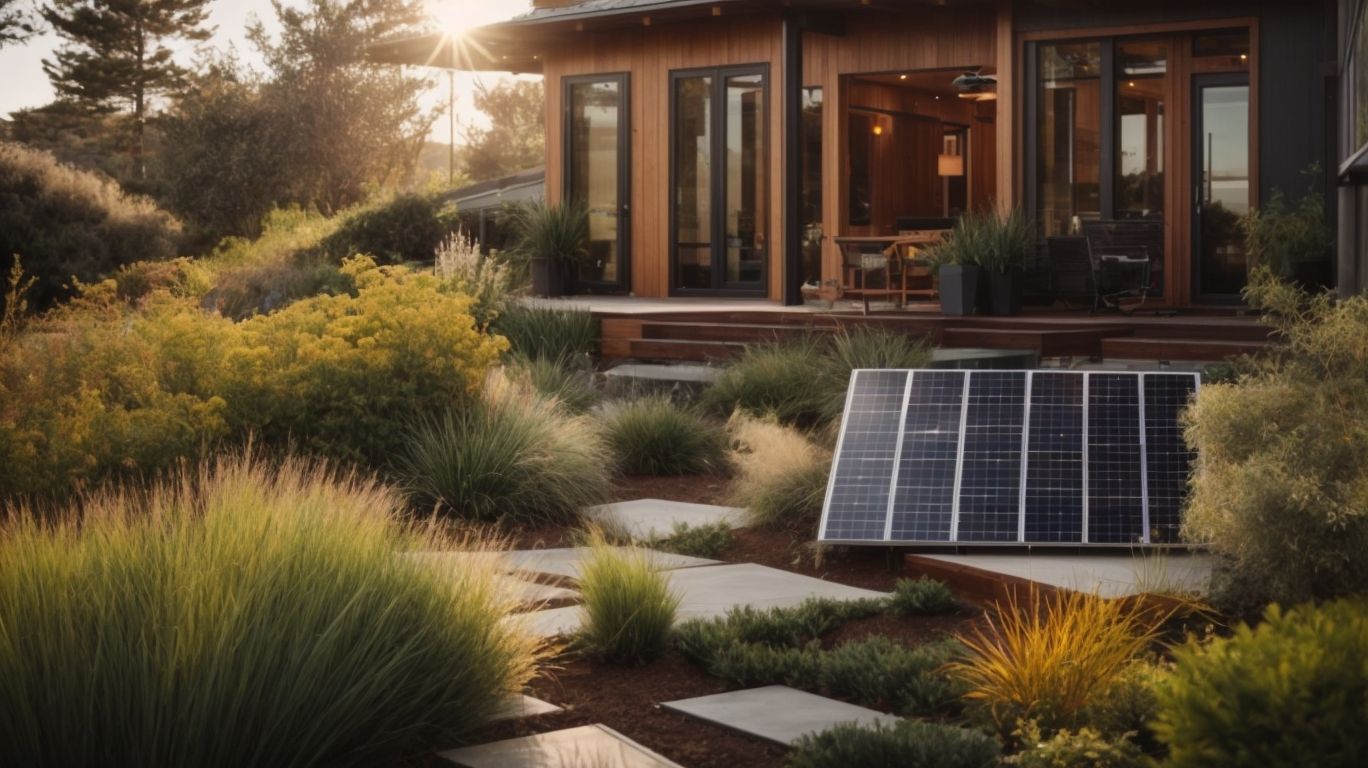
Expanding Upwards: The Unique Benefits of Second Story Additions
Looking to maximize space, increase property value, or customize your home without the hassle of moving?
Second story additions might be the solution you’re looking for.
We will explore the different types of second story additions, the steps involved in the process, potential challenges to consider, and how to choose the right contractor for the job.
From full second story additions to bump-out additions, we will cover everything you need to know about expanding upwards in your home.
What Are Second Story Additions?
Second story additions involve expanding a home vertically by adding a new level above the existing structure, providing homeowners with a range of benefits and opportunities for enhanced living spaces.
By opting for a second-story addition, homeowners can significantly increase their property’s square footage without sacrificing any yard space, making it a great solution for expanding families or those in need of more functional rooms.
These additions often lead to a notable increase in property value, as the added square footage and modernized design can attract potential buyers and boost the overall appeal of the home in the real estate market.
The extra level can be transformed into various functional spaces, such as extra bedrooms, a home office, a playroom, or a guest suite, catering to the diverse needs and lifestyles of homeowners.
Why Choose a Second Story Addition?
Opting for a second story addition can significantly benefit homeowners by boosting property value, offering customization options, enhancing functionality, and increasing the overall appeal and investment potential of the residential property.
The addition of a second story not only increases the square footage of the home, but it also creates a sense of spaciousness and modernity. Customizing the new level allows homeowners to tailor the space to their specific needs and aesthetic preferences, making it a truly personalized living environment. From extra bedrooms and bathrooms to a home office or entertainment area, the possibilities for functional improvements are endless. The long-term return on investment for a well-executed second story addition is undeniable as it adds both tangible and intangible value to the property.
Maximize Space
One key reason to opt for a second story addition is to maximize living space within a home, offering an excellent opportunity for homeowners to expand their property vertically and cater to the growing spatial needs of their household.
By adding an additional floor, homeowners can enjoy the benefits of more functional space without utilizing extra yard space. This strategy is particularly advantageous in urban areas where land is limited and costly. Second story additions also allow for improved room layout, segregation of private and social areas, and enhanced aesthetic appeal. In the context of evolving needs, such expansions provide flexibility for growing families, creating designated areas for work, play, and relaxation. The housing industry recognizes the value of room additions as a cost-effective solution for those seeking to enhance their living environment.
Increase Property Value
Second story additions can significantly increase the overall property value by enhancing the structural aesthetics, modernizing the home, and aligning with urban planning trends, making it a valuable investment for homeowners looking to boost their property’s appeal and resale potential.
Expanding upwards not only adds square footage but also provides the opportunity to optimize living space, accommodate growing families, or create rental units for additional income streams. The striking visual appeal of a well-designed second story can attract potential buyers and set the property apart in a competitive market.
From an urban planning perspective, these additions contribute to the densification of residential areas, promoting sustainable development and efficient land use. Ultimately, investing in a second story addition can yield substantial returns, increasing both the market value and desirability of the property.
Avoid Moving Costs
Choosing a second story addition can help homeowners avoid the significant expenses associated with moving to a new property, providing a cost-effective solution for expanding living spaces, upgrading amenities, and optimizing the existing residential layout.
By opting for a second story addition, individuals can achieve their desired home improvements without the high costs of purchasing a new property. Construction costs for adding a second story are often more manageable compared to buying a larger house, making it a financially savvy choice.
The process of building upwards allows for maximizing space efficiency, enhancing the functionality and aesthetics of the home. This alternative presents homeowners with the opportunity to customize their living environment to suit their specific needs, all while staying within a more manageable budget.
Customize Your Home
One of the key advantages of second story additions is the ability to customize your home according to your preferences, incorporating personalized architectural and interior design elements that align with your aesthetic vision and enhance the overall comfort and functionality of the living space.
This customization opportunity allows homeowners to truly tailor their living environment to reflect their unique style and needs. With the freedom to choose materials, colors, and layouts, homeowners can create a space that is a true reflection of their personality and taste.
From selecting the perfect lighting fixtures to choosing the ideal flooring options, every detail can be fine-tuned to create a cohesive and personalized space. Architectural features such as skylights, balconies, or window placements can be strategically incorporated to optimize natural light and views, further enhancing the ambiance of the home.
What Are the Different Types of Second Story Additions?
There are several types of second story additions available to homeowners, including full second story additions, partial expansions, and bump-out additions, each offering unique opportunities to enhance room layout, improve home aesthetics, and cater to specific space requirements.
- Full second story additions typically involve adding a complete additional level to the existing structure, significantly increasing the living space and potentially allowing for more cohesive room arrangements.
- Partial expansions, on the other hand, involve extending certain areas of the second floor, such as adding a new bedroom above the garage.
- Bump-out options are ideal for expanding specific rooms horizontally, creating extensions that enhance the layout and visual appeal, often serving as sunrooms, cozy reading nooks, or extended kitchen spaces.
Full Second Story Addition
A full second story addition involves constructing an entire new level above the existing structure, allowing for comprehensive architectural design, structural considerations, roofing extensions, and the creation of a custom home layout tailored to the homeowner’s preferences.
This process typically begins with assessing the existing structure’s capability to support the added weight and ensuring the new level seamlessly integrates with the current design. Architectural design considerations play a crucial role in maximizing space utilization and enhancing the aesthetic appeal of the home. Structural integrity requirements are paramount to ensure the safety and stability of the new addition. The roofing extension is carefully planned to match the existing roofline, creating a cohesive appearance. The result is a truly customized home with unique features and added living space.
Partial Second Story Addition
A partial second story addition involves expanding a section of the upper level of a home, providing opportunities for room additions, interior finishes, flooring options, and enhancements that contribute to improved home comfort and aesthetics.
This type of addition allows homeowners to create additional living spaces such as bedrooms, home offices, or entertainment areas, enhancing the overall functionality and value of their property.
When selecting interior finishes, individuals can personalize their space with choices like hardwood flooring for a warm and sophisticated look or carpeting for added comfort and insulation.
These enhancements not only elevate the visual appeal of the home but also contribute to a more cozy and inviting atmosphere for residents and guests alike.
Bump-Out Addition
A bump-out addition involves extending a section of the existing structure outward, enhancing interior space utilization, optimizing window placement, improving exterior appearance, and incorporating structural beams and engineering considerations to ensure the integrity and aesthetics of the expansion.
This type of addition not only increases the square footage of a home but also strategically improves the flow and functionality of the interior living spaces. By pushing out certain areas, homeowners can create cozy nooks, additional seating areas, or expand kitchen and dining spaces without the need for a full-scale renovation. The careful placement of windows in a bump-out addition can flood previously dimly lit areas with natural light, transforming the ambiance of the interior.
What Are the Steps for a Second Story Addition?
Embarking on a second story addition project involves a series of crucial steps, beginning with consultation and design, navigating the permit acquisition process, managing the construction timeline, overseeing project management tasks, and culminating in a final inspection to ensure compliance and quality.
- During the initial consultation and design phase, homeowners work closely with architects and designers to finalize the layout and structural considerations for the new story.
- Once the design is approved, the next step involves securing the necessary building permits from the local authorities.
- Efficient project management becomes vital at this stage to coordinate with contractors, suppliers, and subcontractors to ensure timely execution of the construction.
- Continuous oversight of the project management aspects, such as budget monitoring and quality control, helps maintain adherence to the project timeline.
- As construction progresses, regular site visits and communication with the construction team are essential for effective project management.
- This meticulous approach paves the way for a successful final inspection, where building inspectors evaluate the workmanship, safety standards, and overall compliance with building codes before granting approval for the completed second story addition.
Consultation and Design
The consultation and design phase of a second story addition project is critical, involving collaborations with architectural designers, interior decorators, and professionals to optimize space utilization, incorporate natural lighting elements, and create functional and aesthetically pleasing living spaces.
During this phase, architects play a pivotal role in conceptualizing and designing the structural aspects of the second story addition.
Interior decorators focus on enhancing the interior ambiance and aesthetic appeal of the space, ensuring a cohesive design that seamlessly integrates with the existing layout.
Design professionals, on the other hand, bring their expertise to the table in maximizing natural lighting opportunities, utilizing innovative techniques to illuminate the expanded areas and create a bright and welcoming atmosphere.
By harmonizing these elements, the consultation and design phase sets the foundation for a successful second story addition project that not only expands living space but also enhances the overall functionality and beauty of the home.
Obtaining Permits
Securing the necessary permits is a crucial step in a second story addition project, ensuring compliance with local regulations, building codes, and zoning laws to proceed with the construction process legally and in adherence to established standards.
By obtaining the appropriate permits for a second story addition, homeowners not only demonstrate respect for legal protocols but also protect themselves from potential penalties and disruptions that could arise from non-compliance. Building permits ensure that the construction meets safety standards and quality requirements, providing reassurance to both residents and authorities that the project meets all necessary criteria. Adhering to zoning laws prevents conflicts with neighboring properties and maintains the overall aesthetic and functional harmony of the community.
Demolition and Preparation
Before commencing the construction phase of a second story addition, proper demolition and preparation activities are essential, often involving the expertise of structural engineers, incorporation of safety considerations, and adherence to green building practices to ensure a sustainable and secure project start.
- Structural engineers play a crucial role in assessing the existing structure’s ability to support the additional load of the new story, ensuring structural integrity.
- Safety considerations during the demolition phase are vital to protect workers and bystanders, involving precautions such as proper equipment usage and hazard identification.
- Integrating green building practices, such as salvaging materials for reuse and recycling construction waste, aligns the project with environmental consciousness and reduces its carbon footprint.
By prioritizing safety and sustainability from the outset, a second story addition can be not just a functional expansion but also a responsible construction endeavor.
Construction and Finishing
The construction and finishing stage of a second story addition project involves managing construction costs, optimizing energy efficiency through material selection, prioritizing sustainable building materials, and ensuring high-quality interior finishes to create a cohesive and visually appealing living space.
- During the construction phase, key elements include framing the new structure to seamlessly integrate it with the existing home, selecting energy-efficient windows and insulation to enhance the overall sustainability of the addition.
- Incorporating eco-friendly materials such as bamboo flooring or reclaimed wood can not only add charm but also reduce the environmental impact of the project.
When it comes to interior finishes, focusing on details like lighting fixtures, cabinetry hardware, and paint colors can elevate the aesthetic while ensuring functionality and comfort for the occupants.
What Are the Potential Challenges of Second Story Additions?
Despite the numerous benefits, second story additions can present challenges related to ensuring structural integrity, addressing access and safety concerns, managing costs and construction timelines, and navigating potential renovation complexities that may arise during the project.
Structural integrity is a critical consideration when adding a second story to a home. The existing foundation and framework must be evaluated to support the additional weight and ensure stability. Safety and access issues also come into play, particularly during construction.
Homeowners may need to find temporary living arrangements, deal with noise and disruption, and ensure that construction workers adhere to safety protocols. Managing costs and construction timelines can be a major headache, with unexpected expenses, delays, and the need for thorough planning to keep the project on track within the desired timeframe.
Structural Integrity
Maintaining structural integrity is a paramount concern in second story additions, requiring meticulous engineering considerations, adherence to permit and approval processes, and the integration of robust structural beams to support the new level and ensure the safety and stability of the entire structure.
This focus on structural integrity goes beyond mere aesthetics; it is essential for the longevity and safety of the property.
Detailed engineering assessments are crucial to determine the load-bearing capacity of the existing structure and ensure that the new addition complies with building codes and regulations.
Obtaining the necessary permits and approvals from local authorities is not just a formality but a key step in ensuring that the project meets safety standards.
Incorporating strong structural beams provides the much-needed support to prevent sagging and maintain the structural integrity of the entire building.
Access and Safety
Ensuring proper access and safety measures during a second story addition involves strategic planning for staircase installation, incorporation of safety considerations throughout the construction process, conducting a thorough final inspection, and maintaining clear communication with contractors to guarantee a secure and compliant project execution.
One of the key aspects of staircase design in second-story additions is ensuring that the stairs meet building codes and safety standards to prevent accidents. Safety protocols, such as handrails and proper tread depth, must be meticulously followed to create a secure environment.
Final inspection requirements play a crucial role in verifying that all safety measures have been implemented correctly. Effective communication practices with contractors throughout the construction phase help address any safety concerns promptly, ensuring that the project adheres to safety standards and regulations.
Cost and Time
Managing costs and timelines effectively is crucial in second story additions, necessitating careful budgeting, exploration of financing options, adherence to the construction process timeline, and proactive measures to mitigate unexpected expenses or delays that may impact the overall project success.
By having a clear understanding of the project’s budget and outlining detailed cost estimates for materials, labor, and any potential unforeseen expenses, homeowners can make informed decisions throughout the construction phase.
Selecting the proper financing option, whether through personal savings, home equity loans, or construction loans, is paramount in ensuring financial stability during the renovation process. This strategic approach not only helps in controlling costs but also plays a significant role in completing the project within the designated timeline, showcasing the importance of meticulous planning and effective project management.
How to Choose the Right Contractor for a Second Story Addition?
Selecting the appropriate contractor for a second story addition project involves considerations such as expertise in project management, insurance coverage, knowledge of green building practices, effective communication skills, and a track record of successful collaborations with homeowners to ensure a smooth and satisfactory construction experience.
When looking for a contractor, ensure they have experience liaising with homeowner’s insurance providers to navigate any potential claims or coverage issues that may arise during the project.
Effective communication with contractors is essential for keeping homeowners informed about the progress and any challenges encountered. A contractor who values clear and open communication can mitigate misunderstandings and address concerns promptly, fostering a positive working relationship.
A contractor with a history of positive interactions with homeowners can provide valuable references to give you confidence in their ability to deliver a successful second story addition.




No Comments